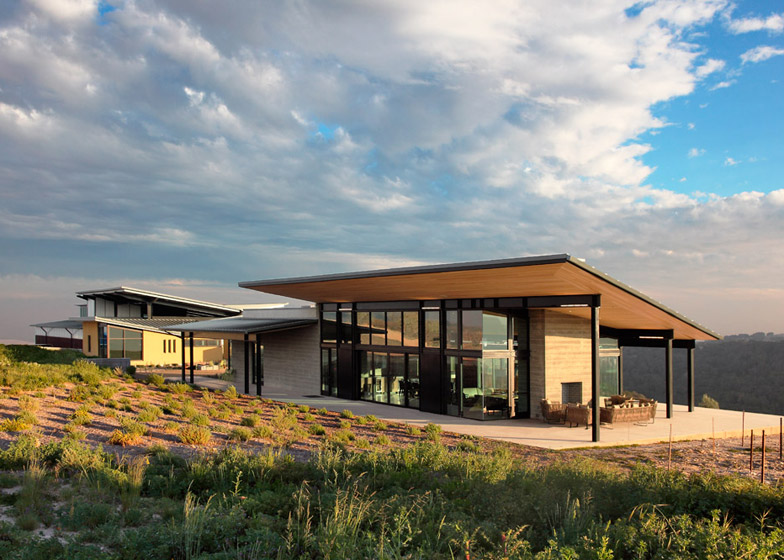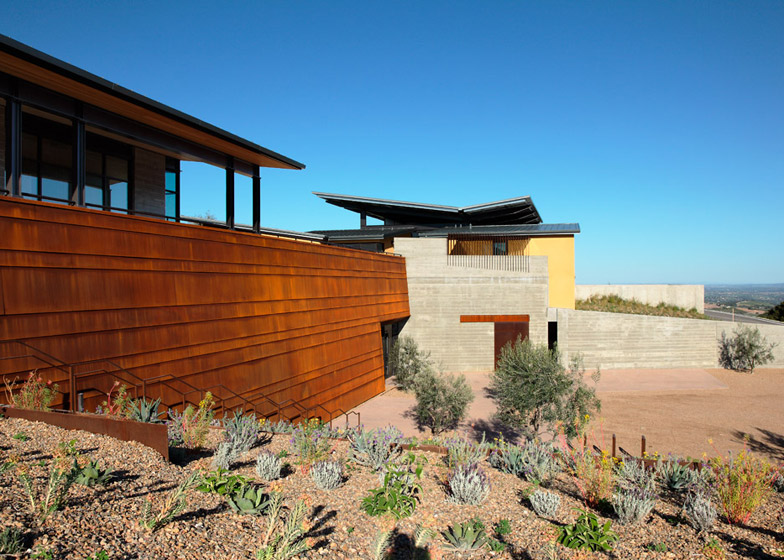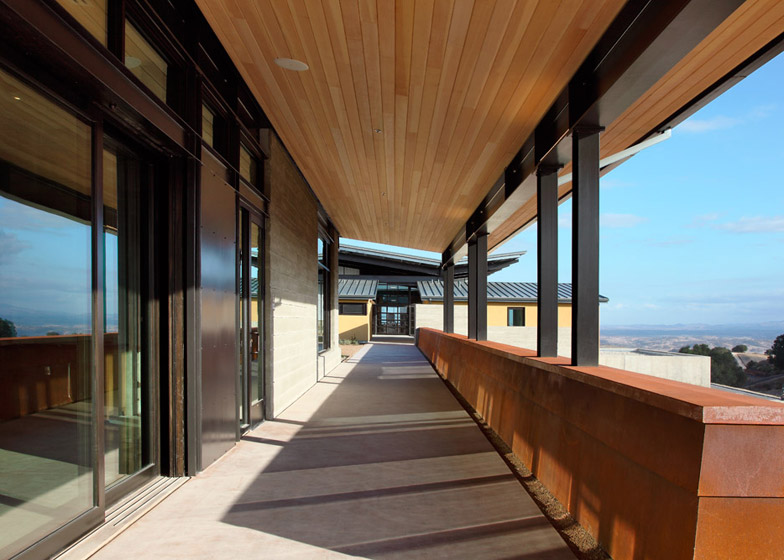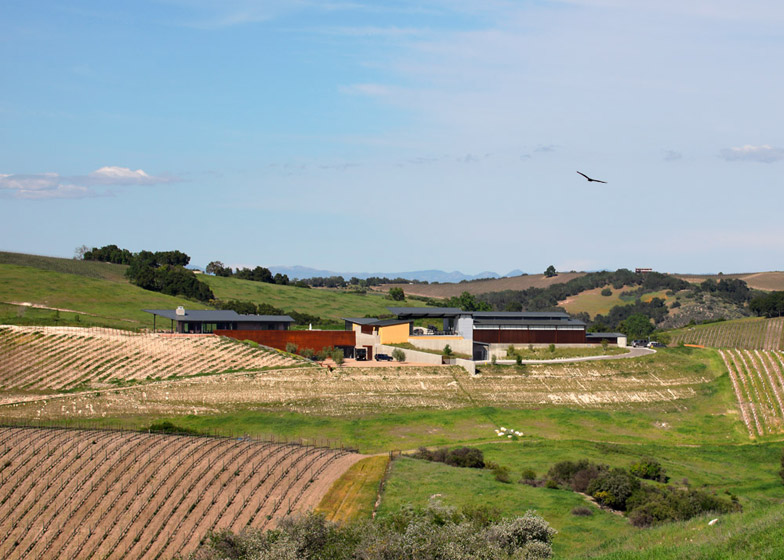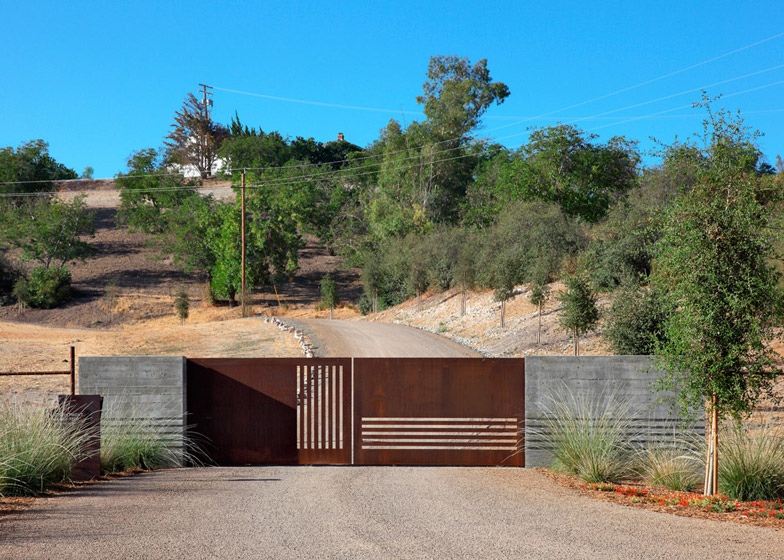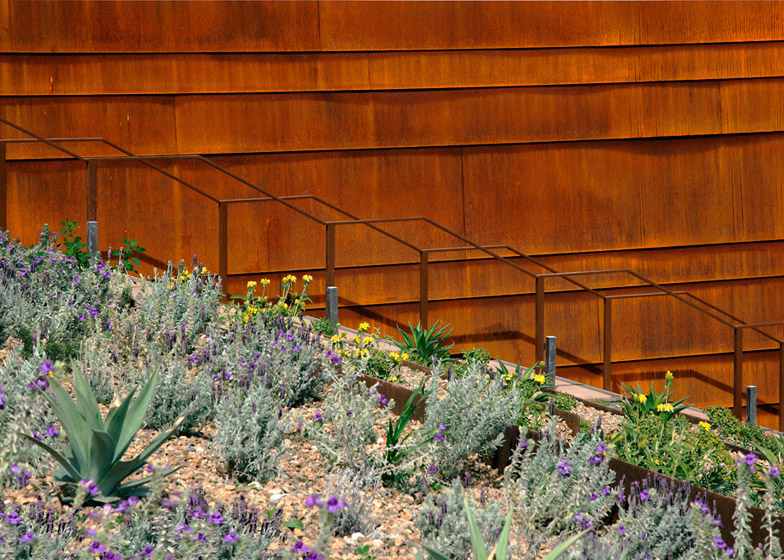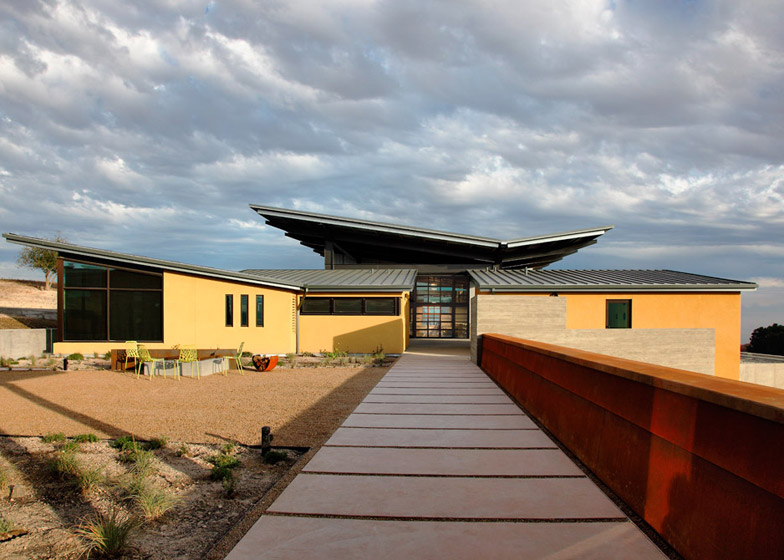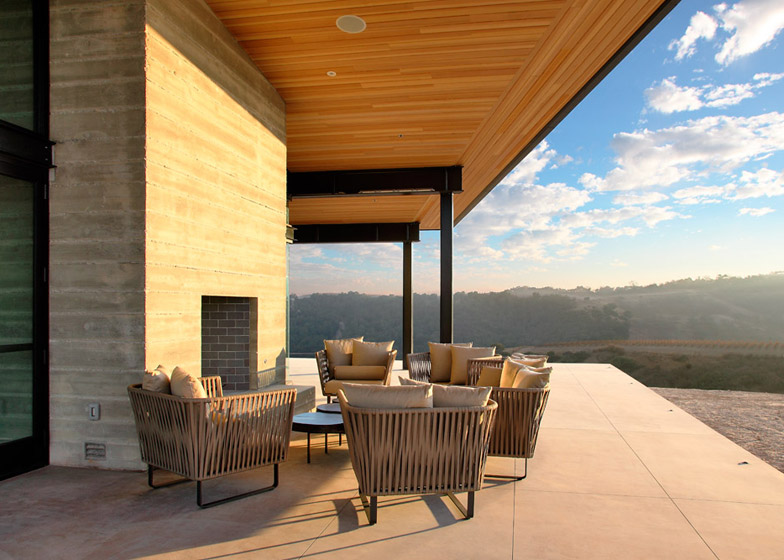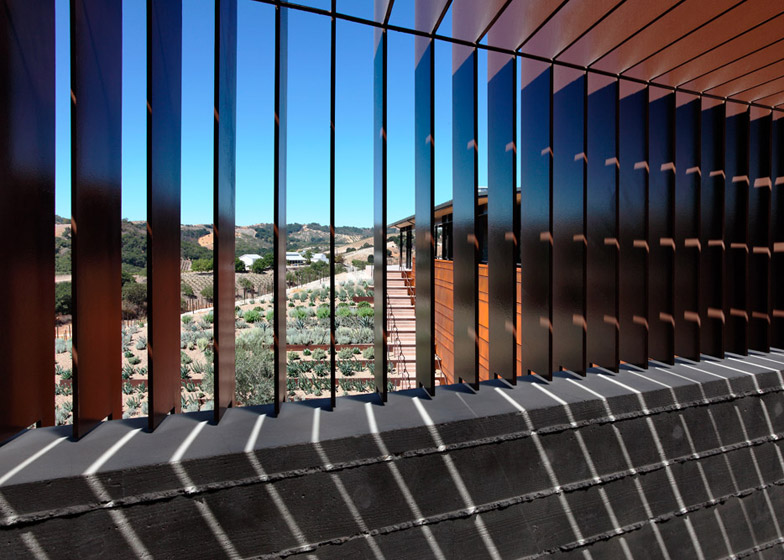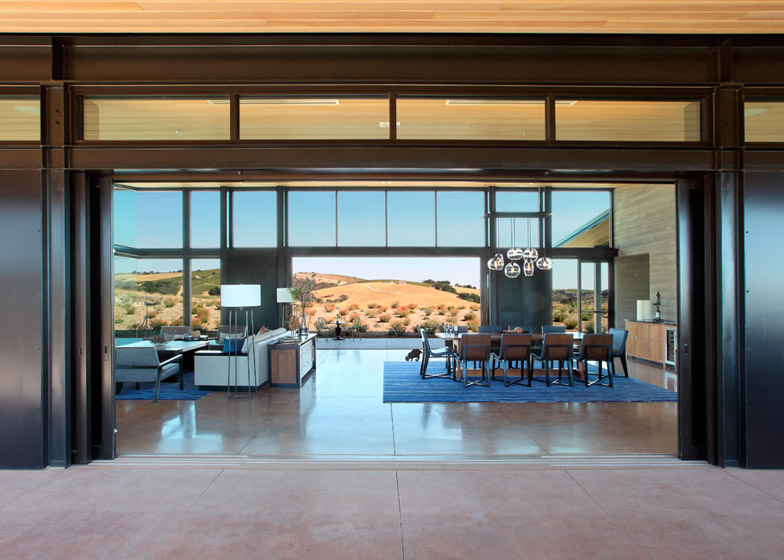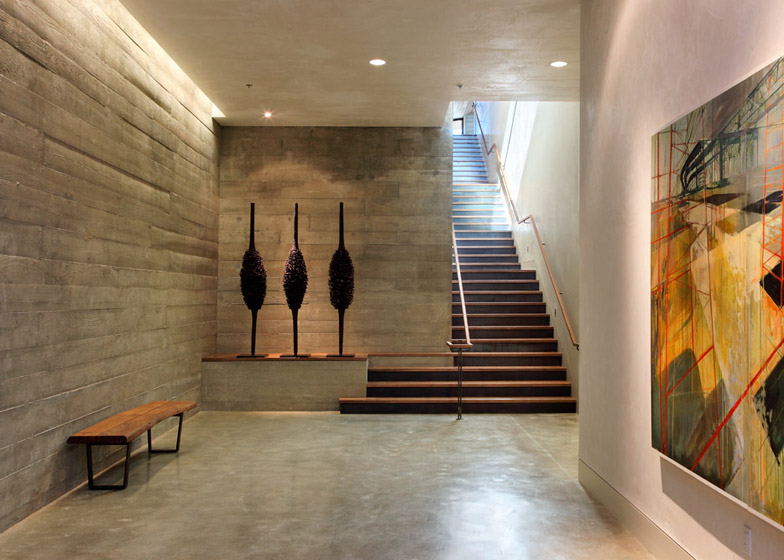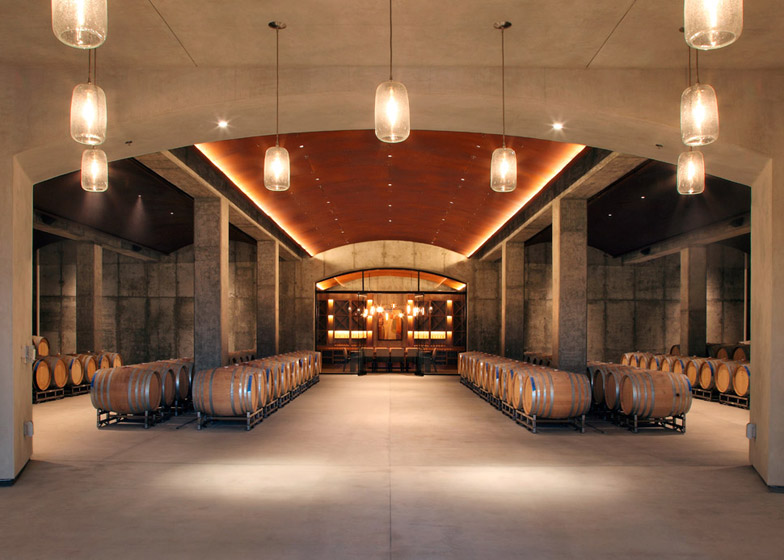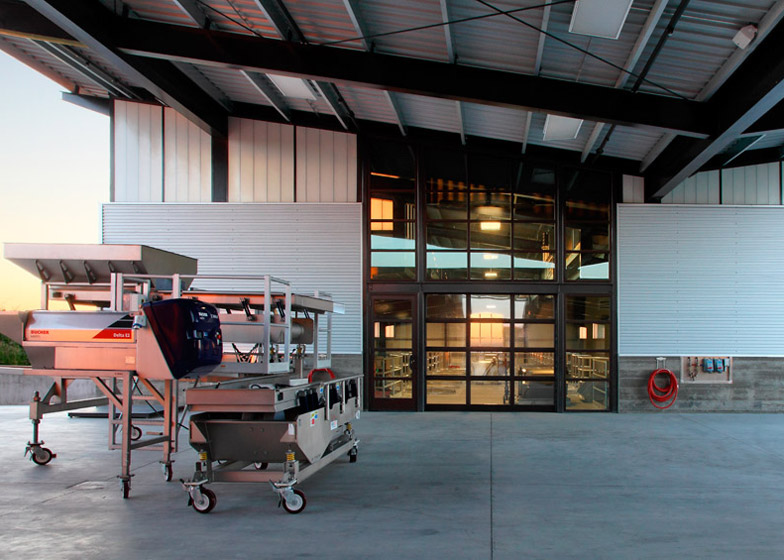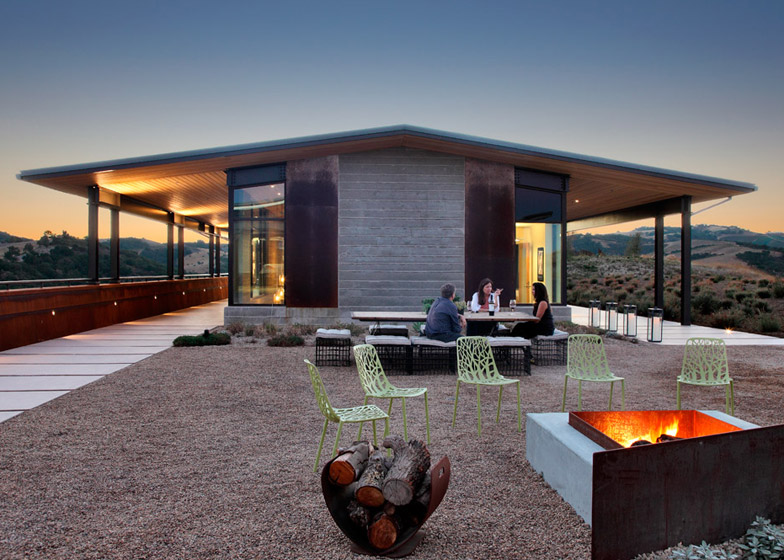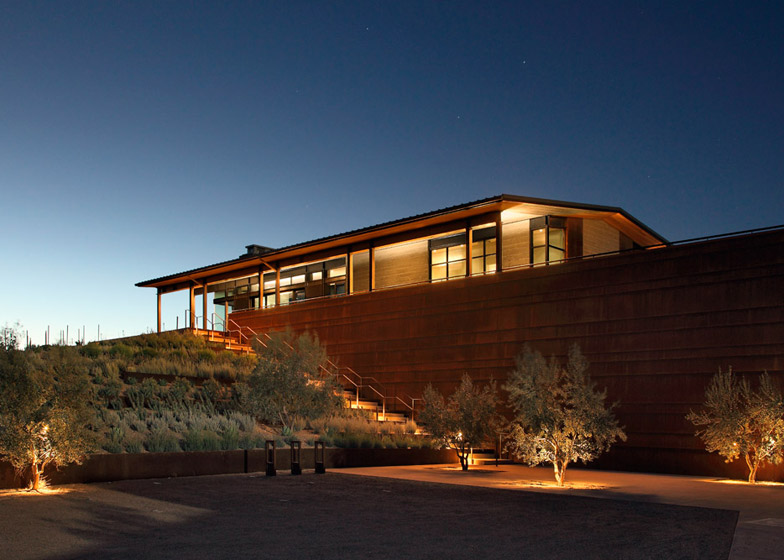San Francisco-based BAR Architects has completed a California winery designed to match the colours and textures of its natural surroundings (+ slideshow).
The Law Winery is situated on a 55-acre (22 hectare) estate near Paso Robles, California. Located halfway between Los Angeles and San Francisco, the region is known for its hot springs, wineries, almond orchards and olive oil production.
BAR Architects created a small complex for the young winery on a sloped site. The varied program includes a tasting room, wine library, a laboratory, offices, and areas for crushing grapes and storing wine barrels.
The 23,800-square-foot (2,200 square metre) facility is equipped to handle 10,000 cases of wine annually.
Built along the ridge of a hill, the complex comprises four buildings set atop a subterranean volume. The above-ground structures – largely made of concrete, glass, and steel – are set among walkways and outdoor spaces for working and socialising.
In one portion of the property, a large patio with a fire pit overlooks the area's undulating terrain.
Jeff Goodwin, firm principal, said the facility's design takes its cue from farming villages.
"The design, inspired by traditional agrarian compounds of the western United States, enables each element of the wine-making process to be expressed as a simple, distinct and function-driven building form," he explained.
"The property's slopes and topography were thoroughly studied to optimise the solar exposure, capture views and respond to local wind patterns," he added.
A 24-foot-high (7 metre) wall made of Corten steel lines a small parking lot and acts as the winery's "front door", while a staircase along the wall ascends a hill landscaped with drought-resistant plants.
"The Corten entry wall intentionally announces that a large portion of the facility was 'cleft out' of the natural landform," said Goodwin.
The winery's tasting room is located inside a 2,450-square-foot (230 square metre) structure with ample glazing and polished concrete flooring. This building also contains a kitchen, chilled wine storage, and an office.
Rather than a traditional tasting bar, the space is intended to be more like a great room in a house, with a sitting room and dining table.
The fermentation process occurs within a prefabricated steel building clad in sheets of Corten steel. A clerestory enables diffused, natural light to enter the space, which houses 22 concrete barrels.
Two additional above-grade structures contain offices and employee space.
The architects placed the wine storage below ground. "You don't want natural light to enter the space, as it's detrimental to the wine," Goodwin explained.
To add visual interest to the utilitarian space, the architects clad a portion of the ceiling in curved panels of Corten steel.
At the rear of the storage area is the wine library, which is lined with walnut panelling.
All of the buildings are topped with sloped, overhanging roofs that shade the facility while also directing rainwater to a buried 15,000-gallon (57 kilolitre) cistern. The water is stored and reused for landscape irrigation.
"Large roof overhangs heighten the connection to the surrounding landscape and provide year-round flexibility without costly indoor, conditioned space," said the firm.
Goodwin said the facility is designed to provide a pleasing experience not only for visitors, but also for workers.
"The design intimately connects the building to the site and utilises locally sourced, durable materials to provide a healthy, long-lasting work environment," Goodwin said.
BAR Architects, founded over 40 years ago, strives to create "places that inspire and that stand the test of time". Its diverse portfolio includes several wineries.
Recent wine-related facilities by other firms include a tasting hall at an Austrian winery by Elmar Ludescher and Philip Lutz, and a winery by Foster + Partners at the historic Château Margaux estate outside of Bordeaux.


